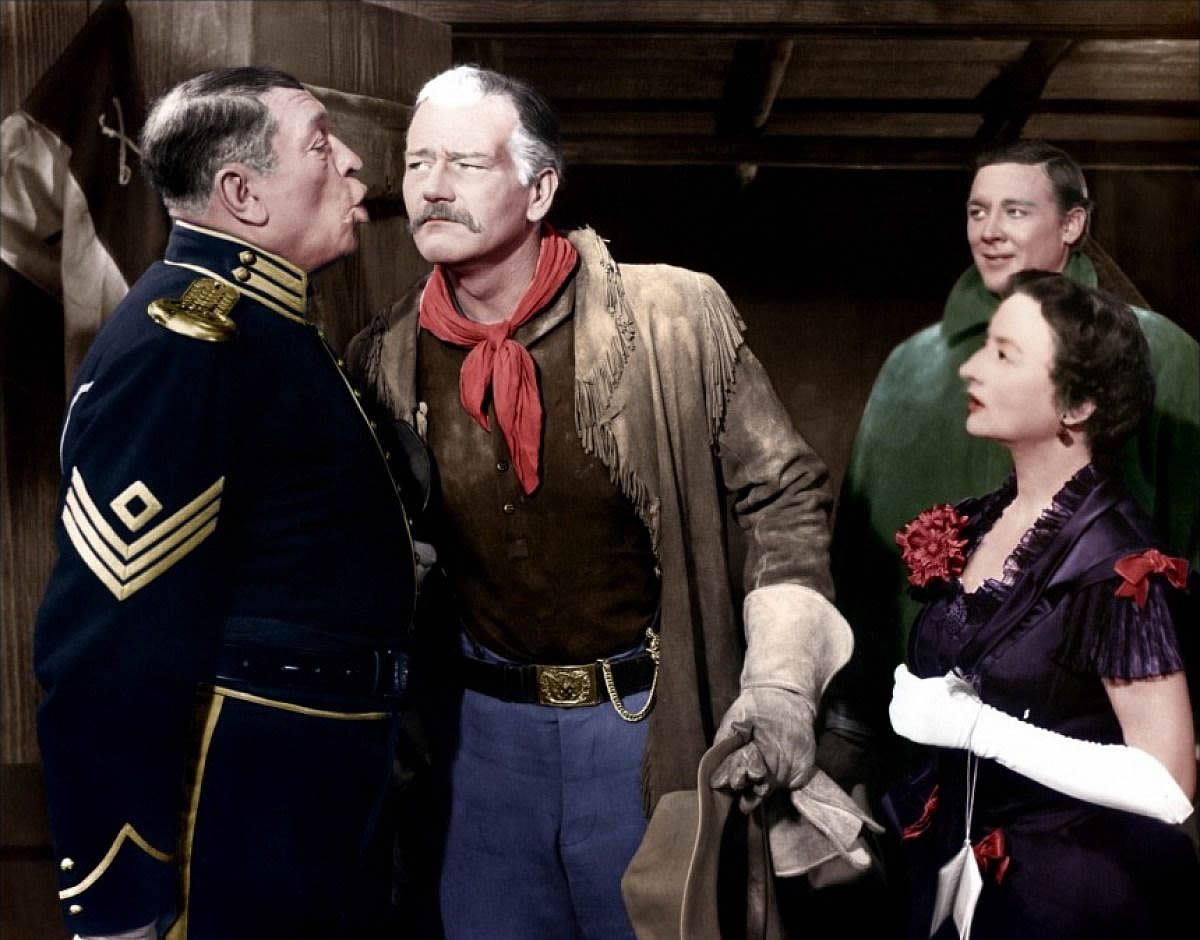Strength in Unity
The second film in John Ford’s cavalry trilogy, She Wore a Yellow Ribbon (1949) is best viewed as a companion piece to Fort Apache (1948). Where in Fort Apache, ritual and duty are questioned and even challenged, She Wore a Yellow Ribbon affirms ritual and duty as both necessary and honorable. As a result, Captain Nathan Brittle (played by John Wayne) is a more sympathetic character than Fort Apache’s Colonel Thursday. Where Fort Apache shows how unity can be disastrous when following a misguided leader, She Wore a Yellow Ribbon shows how unity can succeed when a leader understands the long-term goals and doesn’t underestimate the enemy.
She Wore a Yellow Ribbon was well received at the time of its release. Here’s what Bosley Crowther had to say about it in his New York Times review dated November 18, 1949:
For in this big Technicolored Western Mr. Ford has superbly achieved a vast and composite illustration of all the legends of the frontier cavalryman. He has got the bold and dashing courage, the stout masculine sentiment, the grandeur of rear-guard heroism and the brash bravado of the barrack-room brawl. And, best of all, he has got the brilliant color and vivid detail of those legendary troops as they ranged through the silent “Indian country” and across the magnificent Western plains.
The story is set immediately following Custer’s Last Stand (a historical event that was the basis of the fictional confrontation in Fort Apache). Ford emphasizes that both the army and the Indian forces are unified from diverse groups. The narration explains that the uprising consists of many different Indian nations who are emboldened by Custer’s defeat. The story also provides numerous references to the cavalry being strengthened by its absorption of the Confederate soldiers.
Captain Brittle is about to retire, and a key question in the movie is whether the new soldiers will have the experience to understand not only what’s at stake, but also why a conflict isn’t inevitable. When Brittle and Sgt. Tyree (played by Ben Johnson) enter the Indian camp to try to avert a battle, it’s clear the young Indians no longer heed the wisdom of their elders. Ultimately, it’s the willingness of the cavalry to incorporate the experience of its elders (and the willingness of the young recruits to follow that wisdom) that gives the army an advantage over the Indians.
She Wore a Yellow Ribbon
(1949; directed by John Ford)
Warner Archive Collection (Blu-ray)
Turner Home Entertainment (DVD)
Thursday, February 22 at 8:00 p.m. eastern on Turner Classic Movies
Reviews